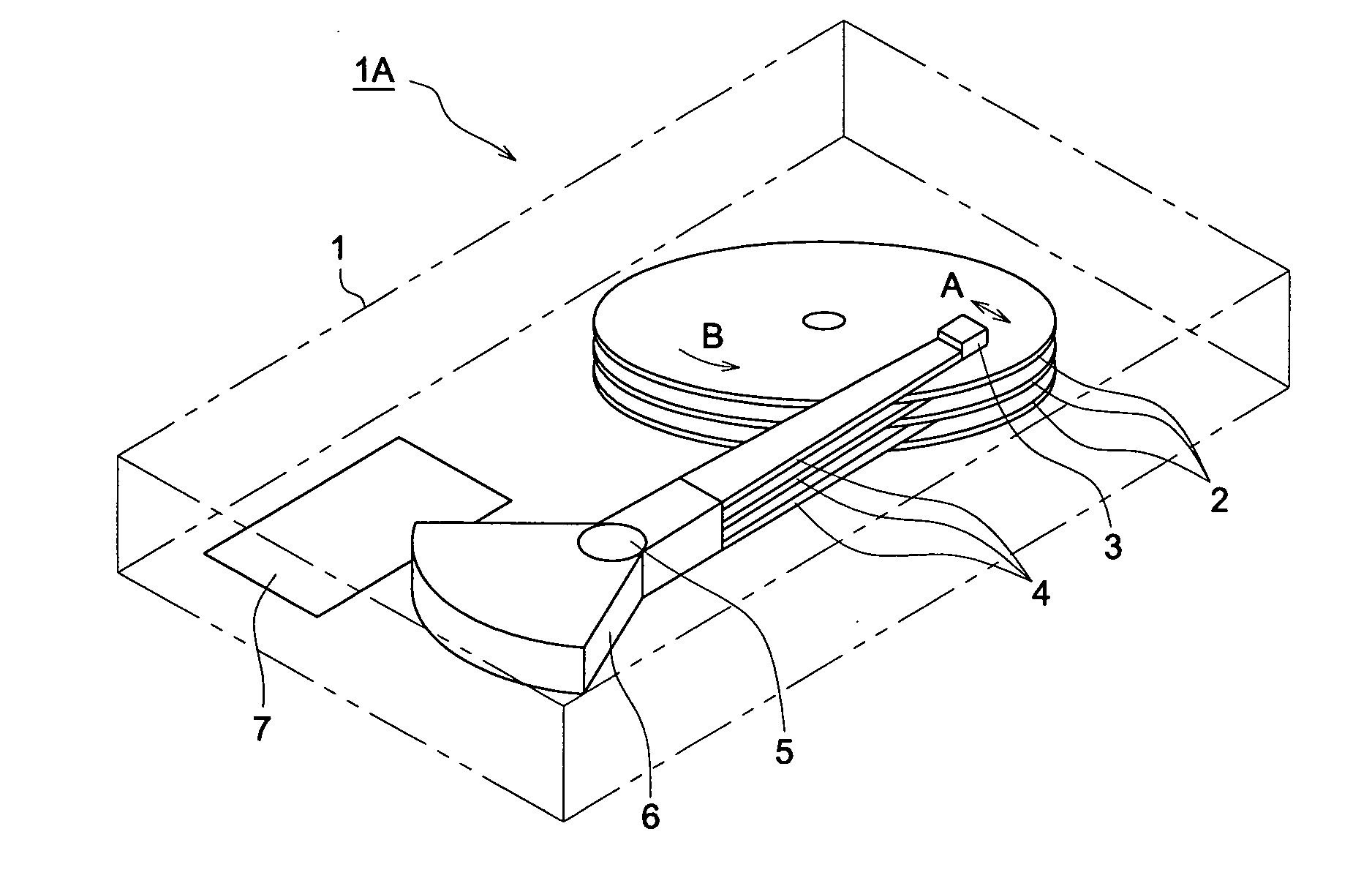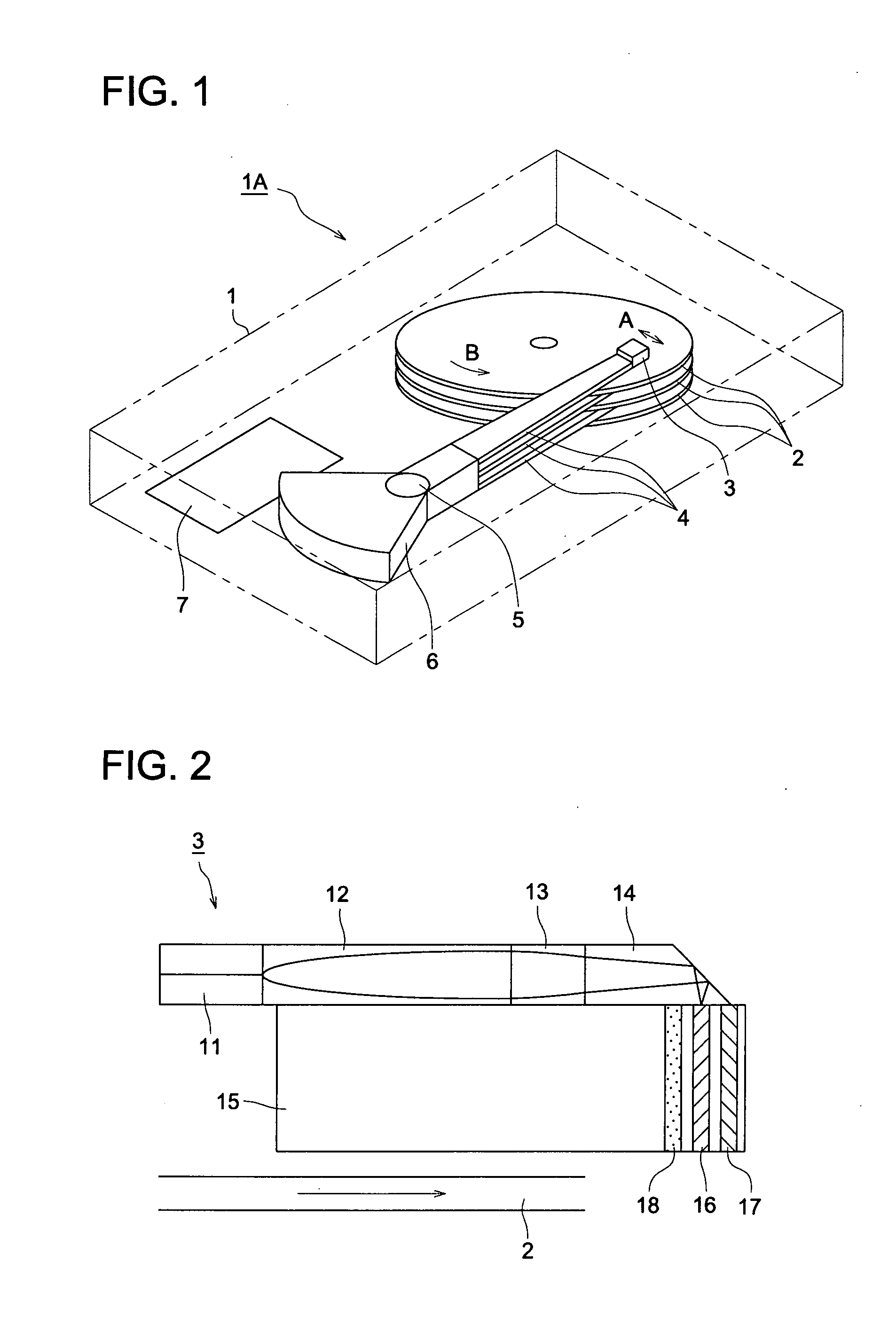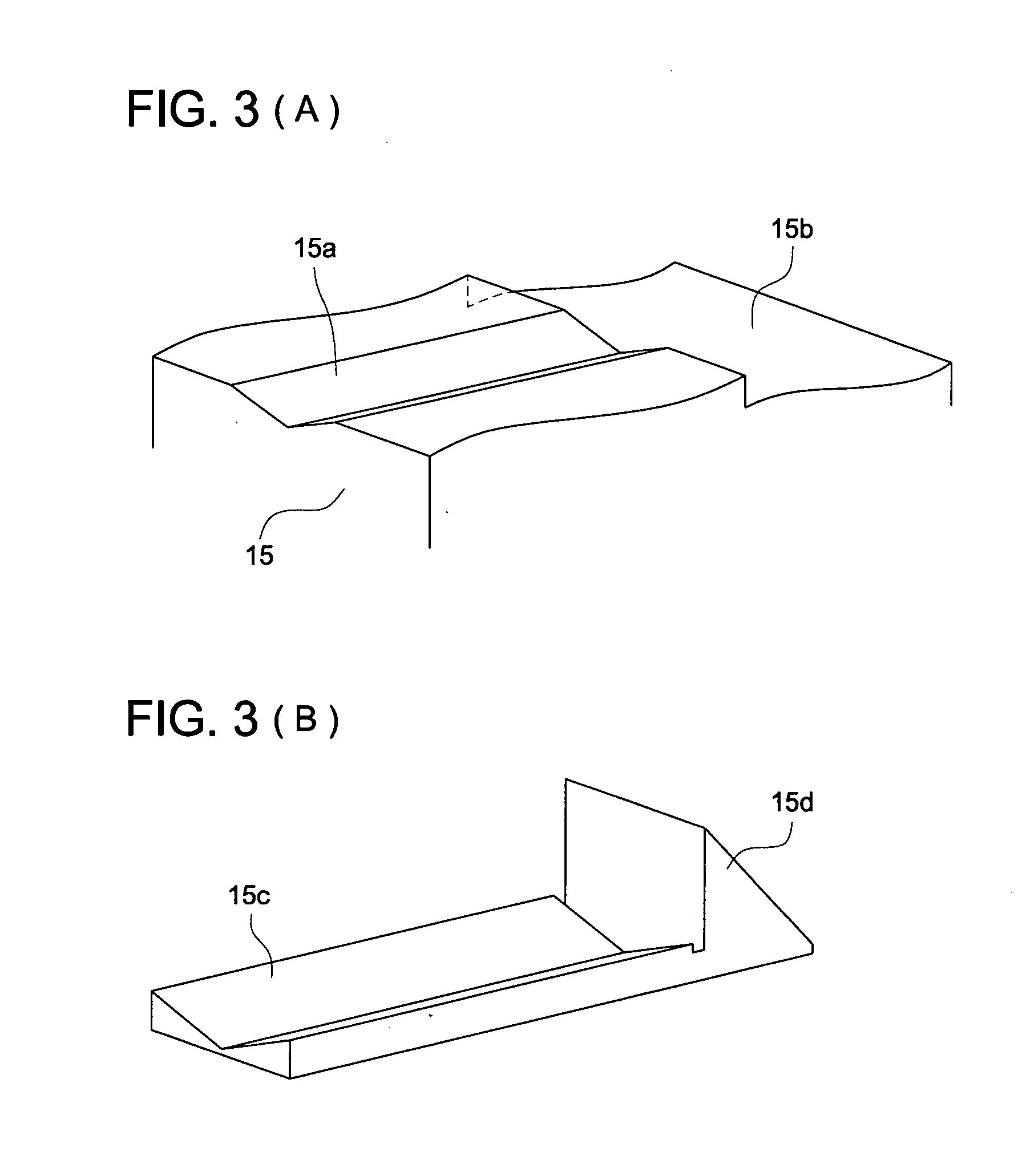Optical head and optical recording apparatus
a recording apparatus and optical head technology, applied in the field of optical head and optical recording apparatus, can solve the problems of low optical efficiency, inability of optical system to condense optical spot to such an extent, and inability to achieve significant increase in value, etc., and achieve low height and good luminous efficacy
- Summary
- Abstract
- Description
- Claims
- Application Information
AI Technical Summary
Benefits of technology
Problems solved by technology
Method used
Image
Examples
working examples
[0065]The following is a description of the working examples of this invention.
[0066]The common conditions in Working Examples 1 to 9 below are shown in the following. Equation (1) for the refraction index of the GRIN lens using wavelength 1.31 μm is shown again below.
n(r)=NO+NR2×r2 (1),
[0067]where r is the distance from the center (distance in the diametrical direction from the center).
[0068]The constants required for showing the refraction index of GRIN lens A and GRIN lens B which are the graded index lens used in Working Examples 1 to 9 below Equation (1) above are shown below.
[0069]GRIN lens A (NA: 0.166)
[0070]N0=1.479606
[0071]NR2=−2.380952
[0072]GRIN lens B (NA: 0.395)
[0073]N0=1.540737
[0074]NR2=−12.47619
[0075]Diameter of GRIN A and GRIN B: 125 μm (in examples 1-8)
[0076]Diameter of GRIN A and GRIN B: 80 μm (in example 9)
[0077]In the examples below, the magnetic recording section, the magnetic reproduction section and the plasma probe are not included, but in the case of the opt...
working example 1
[0080]10 in FIG. 6 is the optical head, 11 is the optical fiber, 12 is the GRIN lens A, 13 is GRIN lens B, 14 is the prism, 15 is the slider and 16 is the optical waveguide.
[0081]In FIG. 6, GRIN lens A12, GRIN lens B13 and prism 14 are installed on the slider 15 formed of AlTiC of length of the pico slider (in the movement direction) of 1.25 mm, thickness (floating direction) of 0.3 mm, and depth of 1 mm. The light flux output from the optical fiber 11 with diameter 125 μm forms a parallel light flux using the GRIN lens A12 which have a length of 0.875 mm, and passes through the GRIN lens B13 with a length of 0.15 mm, and the parallel light enters as converging light into the prism 14 which is formed of quartz and whose deflection surface is 45°. The light flux that was deflected at approximately 90° by the prism 14 forms a light spot that is focused so as to be substantially orthogonal on the input end surface of the optical waveguide 16, and is thereby optically bonded. Three elem...
working example 2
[0083]20 in FIG. 7 is the optical head, 11 is the optical fiber, 12 is the GRIN lens A, 13 is GRIN lens B, 24 is the prism, 15 is the slider and 16 is the optical waveguide.
[0084]In FIG. 7, the GRIN lens A12, GRIN lens B13 and the prism 24 are installed on the slider 15. The light output from the optical fiber 11 passes through the GRIN lens A12, GRIN lens B13 and enters as converging light into the prism 24 which is formed of SF6 glass and whose deflection surface is 45°. The light flux that was deflected at approximately 90° by the prism 24 forms a light spot that is focused so as to be substantially orthogonal to the input end surface of the optical waveguide 16, and is optically bonded. Three elements which are the optical fiber 11, the GRIN lens A12 and the GRIN lens B13 are joined by melting, and positioning can be performed as one unit, and the end surface of the GRIN lens B13 is pressed onto the light incident surface of the prism 24 and fixed by adhesion such that an air la...
PUM
 Login to View More
Login to View More Abstract
Description
Claims
Application Information
 Login to View More
Login to View More - R&D
- Intellectual Property
- Life Sciences
- Materials
- Tech Scout
- Unparalleled Data Quality
- Higher Quality Content
- 60% Fewer Hallucinations
Browse by: Latest US Patents, China's latest patents, Technical Efficacy Thesaurus, Application Domain, Technology Topic, Popular Technical Reports.
© 2025 PatSnap. All rights reserved.Legal|Privacy policy|Modern Slavery Act Transparency Statement|Sitemap|About US| Contact US: help@patsnap.com



